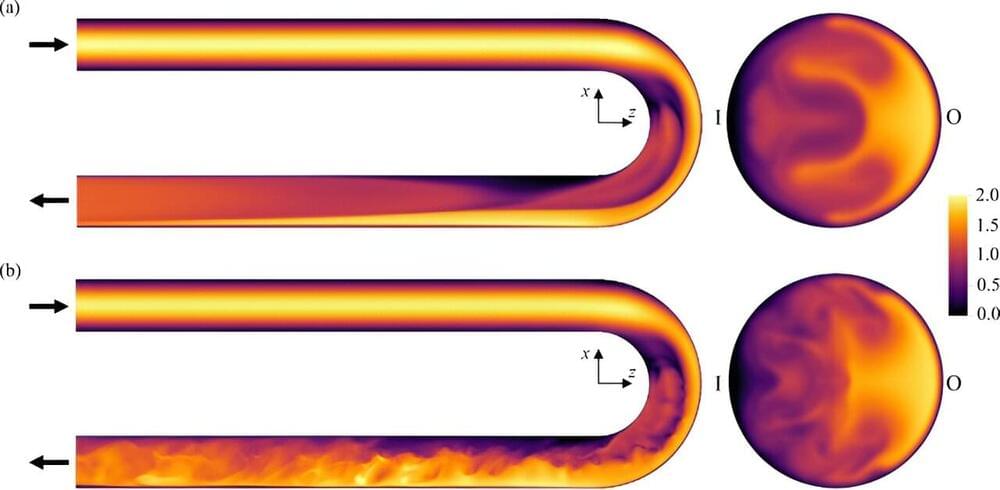How much stress do pipes undergo when a liquid flows through them, and how does it depend on the degree of curvature of the pipe?
Bends in pipes are especially crucial, for example in the aortic arch that connects to the left ventricle of the human heart. Piping systems in industrial plants often include bends of 90 degrees or more, can be helical, and can even have 180-degree bends. Fluid mechanists in Sweden have analyzed fluid flow in such pipes with a 180-degree bend. Their research is published in the journal Physical Review Fluids.
Bends in pipes are different than their straight sections because, in the curved sections, there are outward centrifugal forces due to the inertia of the liquid inside. That force is balanced by a pressure gradient from the outer wall of the pipe to the inner wall. Because the fluid velocities in an imaginary slice through the pipe will not be equal in the curved section—for example, the velocity near the outer wall of the pipe will be greater than near the inner wall—a secondary flow pattern, besides the motion through the pipe, is set up perpendicular to the main flow direction.
